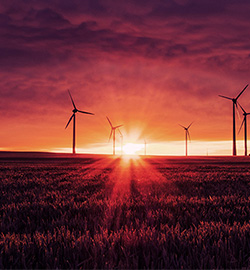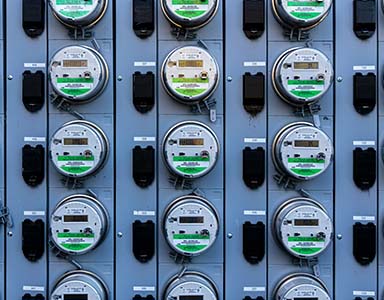Why is Net Zero important?
How to reach Net Zero emissions?
Reaching Net Zero requires businesses and individuals to reduce the amount of carbon dioxide, or CO₂, they emit, or else offset their CO₂ emissions. Reducing or removing carbon emissions, or decarbonization, takes place through an energy transition away from fossil fuels and switching to renewable energy sources like wind or solar.
This switch does not take place overnight. For businesses and countries, the journey to achieving Net Zero emissions starts with a long term strategy that involves setting gradual reduction targets. Many countries or businesses decide to partner with an organization specialized in this process that can help achieve these goals. Reaching Net Zero emissions starts with data collection and monitoring to assess the main sources of greenhouse gas emissions (GHG) and how much is produced. Once a business or a country has a clear picture of its carbon footprint, it can set ambitious but realistic emissions reduction targets, grounded in climate science. These targets allow the creation of a strategic roadmap to achieve their goal of reaching Net Zero emissions.
How many countries have committed to Net Zero?
Commitments by governments to reach Net Zero fall “far short of what is required,” according to the United Nations. According to the Climate Action Tracker, an independent scientific analysis that measures government climate action against the Paris Agreement goals, around 140 countries have announced or are considering Net Zero targets. A UK-based non profit organization, Net Zero tracker, estimated that 139 countries either had passed laws, policy documents, pledges, or had held discussions to achieve Net Zero targets.
Of these, only 17 have passed laws enshrining the 2050 Net Zero target (including the EU). “Net Zero” refers to a balance between the amount of greenhouse gases (GHG) released into the atmosphere and the amount of greenhouse gases removed. This means that in addition to reducing emissions of carbon dioxide (one of the greenhouse gases), Net Zero can also be achieved by carbon offsetting.
What does Net Zero by 2050 mean?
What is the difference between Net Zero, zero carbon and carbon neutrality?
“Net Zero” can be achieved by either cutting the amount of greenhouse gases (GHG) or by offsetting them. In contrast to Net Zero, “zero carbon” stands for releasing no carbon dioxide into the atmosphere. Carbon dioxide (CO₂) is only one of several greenhouse gases, and is produced by burning fossil fuels. “Zero carbon” energy is energy procured by a 100% renewable source like wind or solar.
“Carbon-neutral” refers to a process whereby any carbon emissions that are released into the atmosphere are balanced by an equivalent amount absorbed from the atmosphere via carbon sinks like forests. Since the term “Net Zero” refers to all greenhouse gases and not just CO₂, it is larger in scale than carbon neutrality.



